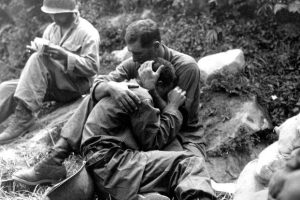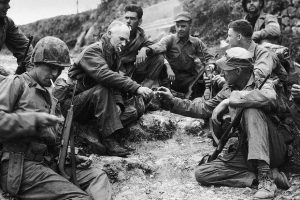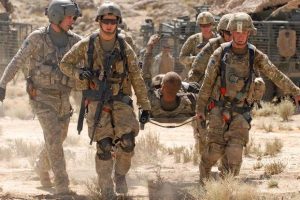The history of Dead Bodies in Major World Wars

Tens of millions of soldiers lost their lives during the two world wars. That’s an almost unimaginable number of Dead Bodies in Major World Wars – So what happened to all these dead bodies in major world wars? Did they get sent home or buried in dehumanizing mass graves out on the battlefields? And how did we develop our attitudes, laws, and rules around the Dead Bodies in Major World Wars?
A Brief History
It’s time to peer into the grisly details and find out. There are some historical precedents for the special treatment of Dead Bodies in Major World Wars in ancient history and the Middle Ages, which we’ll discuss quickly before exploring the more modern material. The Athenians in Ancient Greece were believed to have buried their war dead following their religious beliefs after the Battle of Chaeronea in 338 BC, compared to the Spartans, who preferred to bury their fallen soldiers on the battlefields – which is unsurprising, given how much the Spartans loved fighting people. The Roman Empire also factored in forethought for the burial of their soldiers.
Members of the Roman legion would pay a small amount every month to go towards the cost of their funeral – like a kind of funeral pension – and as such, they tried as best they could to retrieve and properly bury or cremate soldiers from the battlefield after battles. There’s then a long historical period – we’re talking centuries upon centuries – where the post-battle mass grave came into prominence. From the Battle of Hastings to the Napoleonic Wars, burial respect was not given to the average soldier.

A huge number of medieval mass graves still haven’t been properly excavated by archeologists, and many later graves had the problem of being excavated almost immediately to rob fallen soldiers of their valuables. But let’s sail on over to the United States and narrow the scope of our investigations to the last few hundred years.
In the early 1800s
At The beginning of our article regarding dead bodies in the major world wars, we flashback to the 1800s. In the early 1800s, during the Seminole Indian Wars, foot soldiers were buried on the battlefield and left there. Some officers had the privilege of being sent back to their families, but only if their families were willing to foot the bill personally.
In 1900s
This was also the case for the troops killed in foreign wars and the Dead Bodies in Major World Wars during the first half of the 19th Century. Of the approximately 14,000 troops who died in the 1846 Mexican-American War, only 750 collections of remains were sent back – None of which were ever identified. It was only during the Civil War that the United States started thinking seriously about tending to the bodies of fallen US troops.
During the war, over 300,000 Dead Bodies in Major World Wars Union troops were buried locally in small cemeteries near where the battles took place. After the war, the government made an effort to dig up and bury the war dead in national graves. Are you surprised with the story of Dead Bodies in Major World Wars?! stay tuned!
There was another milestone after the Spanish-American War of 1898: The first major repatriation effort for the bodies of US troops who died abroad in the Philippines and Cuba. Those who weren’t brought back were personally buried in large overseas cemeteries dedicated to fallen troops. Not long after that, during the Philippine–American War, two different institutions, the Burial Corps and United States Army Morgue and Office of Identification, worked together to handle the difficult challenge of managing the dead.

The First World War
It is time to look at the history of dead bodies in major world wars specifically, WW1; Then came the First World War, which left the battlefields of Europe littered with the corpses of millions of troops. The families of 43,909 deceased troops requested for their remains to be taken back to the US from Europe by boat – with manning these boats probably being one of the least desirable jobs in the entire war. Twenty thousand families decided to let the bodies of their fallen loved ones remain buried in Europe. And none of this was an efficient process – Despite the war officially ending in 1918, no bodies were sent back until 1921.
What happened to all Dead Bodies in Major World Wars?!
World War II
But World War II was a whole different ball game, especially with the considerably larger-scale American involvement than the First World War. The Graves Registration Service performed the grim duty of identifying, cataloging, transporting, and burying the dead in all of the US Military’s Second World War campaigns, with the army spearheading the initiative, given they suffered four times the combined casualties of the Navy and Marines. In addition to all the regular infantry training, members of the GR Service were subject to “specialized conditioning training,” – which involved watching autopsies and creating model cemeteries in controlled conditions.
Yes, As you expected, the story of Dead bodies in major world wars is sad!
The GR Service
The GR Service even had its special field manual, Field Manual 10-63. GR Soldiers were intimately involved in some of the key parts of the war. In preparation for the D-Day landings, 16 GR Soldiers were killed when German patrol boats attacked an Allied invasion rehearsal off the coast of England. During invasion missions, it was the duty of the GR Soldiers to establish body collection stations for the Allies – which, yes, was as grueling and unpleasant as it sounds.
These sites were often established on incredibly short notice near pre-existing burial sites, with marked-off areas for each grave. When the bodies were sent to the GR Units in France after the Allied invasion, for example, one unit established a site near a cemetery in Sainte-Mère-Église, and when the bodies arrived, they used broken pieces of parachute fabric as death shrouds. French laborers were also brought in to assist in the difficult work of digging graves. The beach after D-Day was far worse, though.

As an almost incomparable bloodbath, where 4,414 Allied soldiers were killed, GR soldiers were cutting bodies out of boat propellers in diving gear and dragging corpses torn apart by machine gun fire out of the wet sand. After a day’s work, the GR soldiers would be covered from head to toe in rotten blood. They’d need to improvise ways of avoiding the horrific smells, which were even worse in the summer. They wore mouth coverings and stuffed cotton up their nostrils. While Summer was horrific, winter brought its nightmares.
Dead Bodies in Major World Wars that were frozen stiff were far harder to transport or bury, let alone retrieve personal effects from their clothes. It also hardened the earth and made digging graves to bury or exhume far harder. The job could be dangerous, too – in ways beyond the standard amount of danger in any soldier’s life. Because of the lack of sanitation facilities, these soldiers were particularly susceptible to infection and disease.
The Nazi’s method
The Nazis also employed some rather horrific tricks – sometimes booby-trapping bodies with explosives, which would be declared a war crime in the Geneva Convention some years later.
Then there were the psychological tolls. Pvt. Thomas J. Dowling, a member of one of the GR units, said of his lingering memories of the faces of the dead, “Some stared wide-eyed; others had died in the middle of a scream, and their mouths hung open. Others had no face at all… The work was nightmarish, and it ate at our hearts…cracked some of us, darkened the spirits of others, and numbed the rest.” You start to get the idea of why a position in the GR units was not a job anyone wanted. Sometimes, they needed to act like benevolent grave robbers.
GR Soldiers
It wasn’t uncommon for soldiers to bury their fallen comrades in shallow graves in the middle of the battles, so after the battles were concluded, the GR soldiers needed to comb the battlefields and dig up the bodies for transport and burial elsewhere. Given that WWII had the most destructive weapons anyone had seen anywhere in the world to date, the bodies left over were rarely intact save for a few bullet wounds. In most cases, the bodies were damaged or decomposed enough that dog tags became vital in their identification.
And in the absence of dog tags, the GR units took fingerprints from the bodies. Sometimes, liquid needed to be injected into the fingers to get proper prints, or the GR soldiers would remove the skin of the fingertips to get a positive ID. The GR Soldiers wouldn’t just deal with the soldiers’ bodies, though: They’d also deal with their personal effects. Government-issued items like weapons, equipment, or ammunition would be taken and redistributed to other soldiers.
Bloodstained items or anything that might upset the family were destroyed, and items like watches, rings, wallets, and photographs were returned to the Quartermaster Depot in Kansas City, which would then handle returning it to the bereaved. Now, consider doing this for over 400,000 deceased troops throughout the war.
It wasn’t until 1946, a year after the conclusion of the war, that Congress authorized the return of the bodies of soldiers who died in the war abroad.

The whole scheme cost 191 million dollars, and 170,752 bereaved families of soldiers requested for their fallen family members to be repatriated to the States, with 109,866 families choosing to let the fallen soldiers in their families remain buried abroad. Around 70,000 fallen troops were never recovered, and the remains of over 10,000 were never recovered.
We are investigating the history of dead bodies in major world wars, stay with us.
The Korean War
During the Korean War, changing times led to new approaches toward the fate of the US War Dead. Because of the rapid shifting of territory ownership on the Korean peninsula during the war, temporary US military cemeteries were constantly at risk of falling into enemy hands – which would be an unacceptable PR disaster for the military.
In 1950
In the Winter of 1950, the US government instituted a policy of concurrent return – Meaning that the Dead Bodies in Major World Wars would be returned to the US as the soldiers died, rather than the previous tactic of waiting until the end of the war to send all the bodies en masse. When taking into account the feelings of the family and also the dignity of the dead, this was unquestionably a step in the right direction. With all the horrors of the past unfolding in front of you, you might be wondering: What are the processes and procedures when a service member dies in the modern day for the Dead Bodies in Major World Wars?
The history of dead bodies in major world wars was sad, wasn’t it?
There is a general procedure for notifying the next of kin of the deceased when a service member is killed in action, dictated by the program director of casualty, mortuary, and military funeral honors at the Defense Department. Details may differ across military branches and in exceptional cases, but this will give you the gist. Between 5 AM and midnight, within twelve hours of the death first being recorded, two uniformed service members will arrive at the door of the bereaved.

Unless an error has been made somewhere along the line, these two service members will be the first ones to make the bereaved aware of their loss. If the deceased had a spouse, this spouse would be assigned a casualty assistance officer to help guide them through the processes. As for the state of the body itself, this is where the Mortuary Affairs Specialists step in. As was the case in the past, these specialists retrieve the bodies as well as the weapons and personal effects of
The dead service members from the battlefield – sometimes at considerable risks to themselves. These specialists will then use their medical knowledge to help with embalming and military honors at the burial site. They’ve assisted in bringing back over 5000 US troops since the conflicts in Iraq and Afghanistan have begun, flown over to the Dover Air Base in Delaware by the Air Force’s Air Mobility Command. Whenever possible, the Mortuary Affairs Specialist will be kept away from both the families of the deceased and the active processes at the funeral.
This is for the sake of the specialists’ mental health – as we mentioned before, this job has some of the highest rates of Post Traumatic Stress Disorder of any position in the military – a branch of careers already predisposed to that particular condition. Constantly being exposed to death and carnage tends to seriously affect the mental health of the specialists. One of the key skills these service members develop is a sense of respectful detachment; it’s one of the only ways they can properly carry out their duties without being overwhelmed.
Having to directly face the grieving family members of the people whose remains they obtain and prepare would humanize them too much, resulting in considerably higher chances of having a traumatic response. The family of the deceased will also be awarded a one-time stipend of $100,000, known as the Death Gratuity, by the last military command of the deceased. While no amount of money could ever replace the presence of a serviceperson’s life within the lives of their families, the Death Gratuity intends to help support them in an undoubtedly difficult time. But the US isn’t the only armed nation engaging in conflict in the modern day.
The Ukraine’s War
In this part of our article about the dead bodies in the major world war we address Ukraine’s war; How does the situation change when the war is on your doorstep? For extremely distressing examples of this, we don’t need to look any further than the war in Ukraine, where soldiers and civilians are killed in equal measure. Because of the sheer number of corpses choking morgues in Ukraine, one forensic pathologist, Vitaliy Levchenko, has found the solution in taking pictures of the teeth of newly interred dead bodies to show to family members for identification.

In his own words, “Teeth help a lot. People remember their relatives’ smiles.” Because of the massive collateral damage of the war, managing the influx of dead bodies has been an “all hands on deck” situation. A military group called “Na Shyti,” meaning “On Their Shield,” – which, unlike the US Military’s Mortuary Affairs Specialists, is a large volunteer organization due to just how many people are being killed – oversees the logistics around the war dead.
So many people started dying that, early in the war, they ran out of high-quality body bags, which resulted in spillages. Refrigerator trucks once used for transporting frozen food have been repurposed to transport the dead to the many overwhelmed morgues across the country. Four out of five bodies can still be identified from sight alone, but these numbers fall in the summer when the decomposition process is faster.
You can also check this video which addresses dead bodies in major world wars, too.
Because the grand majority of casualties in the Ukraine war have been from shelling, a lot of the time, Na Shyti is just transporting parts of Dead Bodies in Major World Wars to morgues for identification. In the face of the catastrophic toll of war, it can feel easy to deny seeing a point in all this – But the hard work of people like Na Shyti, the Mortuary Affairs Specialists, and all their forbears can give grieving families closure and the casualties of war dignity in death. Death is a grisly business in war more than anywhere else. But like any business, one fact remains: If it needs to get done, somebody’s got to do it.
So it was the history of Dead Bodies in Major World Wars! If would like to know more about the Dead Bodies in Major World Wars and the stuff, check out Here.
As brief, we investigated the history of dead bodies in major world wars regarding these wars and eras;
- In the Early 1800
- In 1900
- The WWI
- The WWII
- The Nazi’s method
- The GR Soldiers
- The Korean War
- In 1950
- The Ukraine’s war
 Arab24 اخر اخبار الوطن العربي
Arab24 اخر اخبار الوطن العربي
